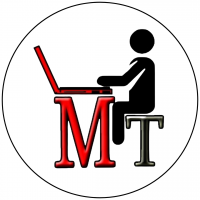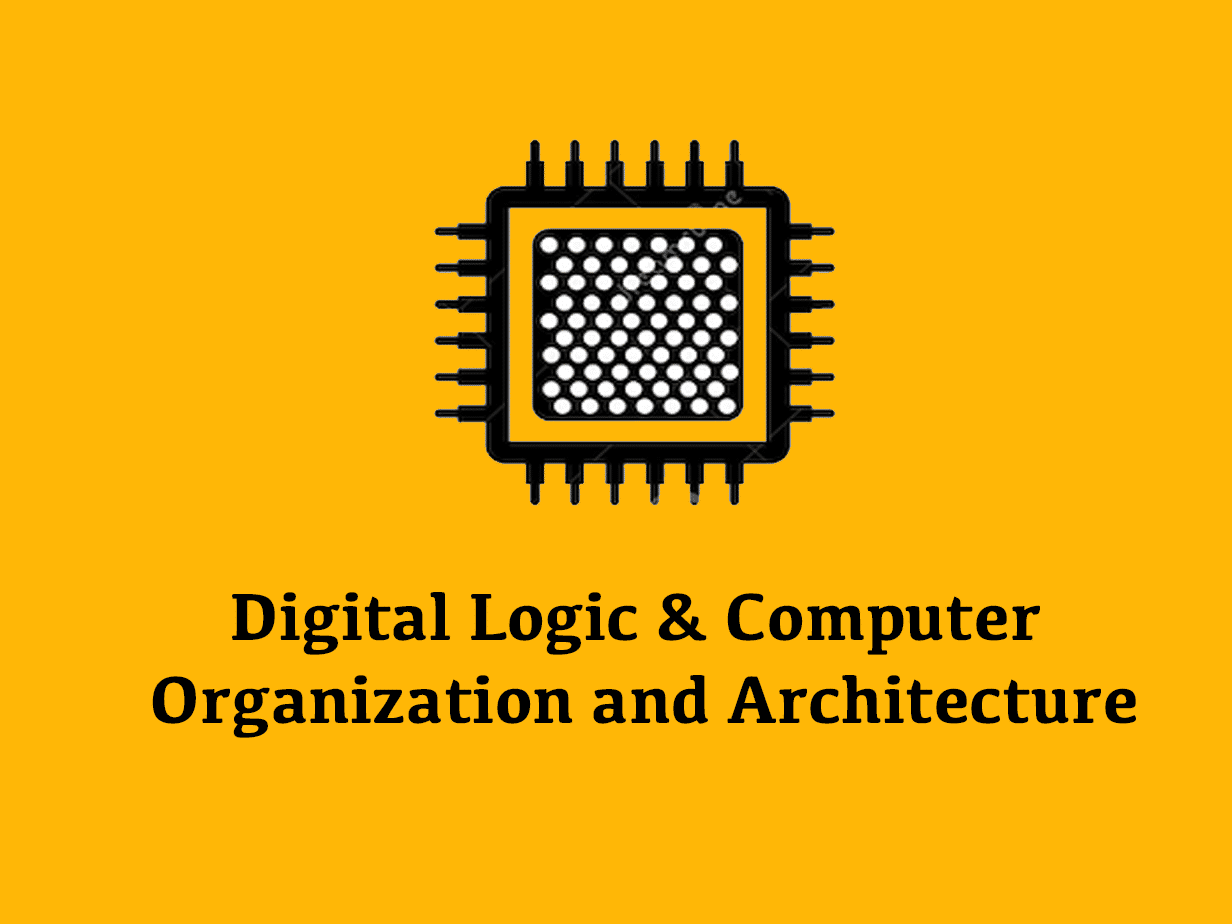DLCOA (Digital Logic & Computer Organization and Architecture)
Digital Logic Design and Analysis is the semester 3 subject of computer engineering in Mumbai University. Course Objectives for the subject Digital Logic Design and Analysis is to introduce the fundamental concepts and methods for design of digital circuits and a pre-requisite for computer organization and architecture, microprocessor systems. To provide the concept of designing Combinational and sequential circuits. To provide basic knowledge of how digital building blocks are described in VHDL. Course Outcomes for the subject Digital Logic Design and Analysis At the end of the course student should be able1. To understand different number systems and their conversions. To analyze and minimize Boolean expressions. To design and analyze combinational circuits. To design and analyze sequential circuits. To understand the basic concepts of VHDL. To study basics of TTL and CMOS Logic families.
Digital Logic is the basis of electronic systems, such as computers and cell phones. Digital Logic is rooted in binary code, a series of zeroes and ones each having an opposite value. This system facilitates the design of electronic circuits that convey information, including logic gates. Digital Logic gate functions include and, or and not. The value system translates input signals into specific output. Digital Logic facilitates computing, robotics and other electronic applications. Digital Logic Design is foundational to the fields of electrical engineering and computer engineering. Digital Logic designers build complex electronic components that use both electrical and computational characteristics. These characteristics may involve power, current, logical function, protocol and user input. Digital Logic Design is used to develop hardware, such as circuit boards and microchip processors. This hardware processes user input, system protocol and other data in computers, navigational systems, cell phones or other high-tech systems.
The prerequisite of this subject is Digital Logic Design and Application. Course Objectives of the subject Computer Organization and Architecture is to have a thorough understanding of the basic structure and operation of a digital computer. To discuss in detail the operation of the arithmetic unit including the algorithms & implementation of fixed-point and floating-point addition, subtraction, multiplication & division. To study the different ways of communicating with I/O devices and standard I/O interfaces. To study the hierarchical memory system including cache memories and virtual memory. Course Outcomes of the subject Computer Organization and Architecture At the end of the course student should be able to. To describe the basic structure of the computer system. To demonstrate the arithmetic algorithms for solving ALU operations. To describe instruction-level parallelism and hazards in typical processor pipelines. To describe superscalar architectures, multi-core architecture, and their advantages to demonstrate the memory mapping techniques. To Identify various types of buses, interrupts, and I/O operations in a computer system.
In computer engineering, computer architecture is a set of rules and methods that describe the functionality, organization, and implementation of computer systems. Some definitions of architecture define it as describing the capabilities and programming model of a computer but not a particular implementation. In other definitions computer architecture involves instruction set architecture design, microarchitecture design, logic design, and implementation. Booth algorithm gives a procedure for multiplying binary integers in signed 2’s complement representation in efficient way, i.e., less number of additions/subtractions required. It operates on the fact that strings of 0’s in the multiplier require no addition but just shifting and a string of 1’s in the multiplier from bit weight 2^k to weight 2^m can be treated as 2^(k+1 ) to 2^m. As in all multiplication schemes, booth algorithm requires examination of the multiplier bits and shifting of the partial product. Prior to the shifting, the multiplicand may be added to the partial product, subtracted from the partial product, or left unchanged according to following rules: The multiplicand is subtracted from the partial product upon encountering the first least significant 1 in a string of 1’s in the multiplier. The multiplicand is added to the partial product upon encountering the first 0 (provided that there was a previous ‘1’) in a string of 0’s in the multiplier. The partial product does not change when the multiplier bit is identical to the previous multiplier bit.
Prepare For Your Placements: https://lastmomenttuitions.com/courses/placement-preparation/
![]()
/ Youtube Channel: https://www.youtube.com/channel/UCGFNZxMqKLsqWERX_N2f08Q
Follow For Latest Updates, Study Tips & More Content!
Course Features
- Lectures 71
- Quiz 0
- Duration 25 hours
- Skill level All levels
- Language Hindi
- Students 699
- Assessments Yes
Curriculum
- 9 Sections
- 71 Lessons
- 52 Weeks
Expand all sectionsCollapse all sections
- Course Overview/*! CSS Used from: Embedded */ *, ::after, ::before { box-sizing: border-box; border-width: 0; border-style: solid; border-color: #e5e7eb; } ::after, ::before { --tw-content: ''; } h2 { font-size: inherit; font-weight: inherit; } a { color: inherit; text-decoration: inherit; } h2, p { margin: 0; } :disabled { cursor: default; } *, ::before, ::after { --tw-border-spacing-x: 0; --tw-border-spacing-y: 0; --tw-translate-x: 0; --tw-translate-y: 0; --tw-rotate: 0; --tw-skew-x: 0; --tw-skew-y: 0; --tw-scale-x: 1; --tw-scale-y: 1; --tw-scroll-snap-strictness: proximity; --tw-ring-offset-width: 0px; --tw-ring-offset-color: #fff; --tw-ring-color: rgb(59 130 246 / 0.5); --tw-ring-offset-shadow: 0 0 #0000; --tw-ring-shadow: 0 0 #0000; --tw-shadow: 0 0 #0000; --tw-shadow-colored: 0 0 #0000; } .mx-auto { margin-left: auto; margin-right: auto; } .mb-2 { margin-bottom: 0.5rem; } .mb-4 { margin-bottom: 1rem; } .mb-6 { margin-bottom: 1.5rem; } .mr-2 { margin-right: 0.5rem; } .max-w-screen-sm { max-width: 640px; } .max-w-screen-xl { max-width: 1280px; } .rounded-lg { border-radius: 0.5rem; } .bg-primary-700 { --tw-bg-opacity: 1; background-color: rgb(29 78 216 / var(--tw-bg-opacity)); } .bg-white { --tw-bg-opacity: 1; background-color: rgb(255 255 255 / var(--tw-bg-opacity)); } .px-4 { padding-left: 1rem; padding-right: 1rem; } .px-5 { padding-left: 1.25rem; padding-right: 1.25rem; } .py-2.5 { padding-top: 0.625rem; padding-bottom: 0.625rem; } .py-8 { padding-top: 2rem; padding-bottom: 2rem; } .text-center { text-align: center; } .text-4xl { font-size: 3rem; line-height: 2.5rem; } .text-sm { font-size: 0.875rem; line-height: 1.25rem; } .font-extrabold { font-weight: 800; } .font-light { font-weight: 300; } .font-medium { font-weight: 500; } .leading-tight { line-height: 1.25; } .tracking-tight { letter-spacing: -0.025em; } .text-gray-500 { --tw-text-opacity: 1; color: rgb(107 114 128 / var(--tw-text-opacity)); } .text-gray-900 { --tw-text-opacity: 1; color: rgb(17 24 39 / var(--tw-text-opacity)); } .text-white { --tw-text-opacity: 1; color: rgb(255 255 255 / var(--tw-text-opacity)); } .hover\:bg-primary-800:hover { --tw-bg-opacity: 1; background-color: rgb(30 64 175 / var(--tw-bg-opacity)); } .focus\:outline-none:focus { outline: 2px solid transparent; outline-offset: 2px; } .focus\:ring-4:focus { --tw-ring-offset-shadow: var(--tw-ring-inset) 0 0 0 var(--tw-ring-offset-width) var(--tw-ring-offset-color); --tw-ring-shadow: var(--tw-ring-inset) 0 0 0 calc(4px + var(--tw-ring-offset-width)) var(--tw-ring-color); box-shadow: var(--tw-ring-offset-shadow), var(--tw-ring-shadow), var(--tw-shadow, 0 0 #0000); } .focus\:ring-primary-300:focus { --tw-ring-opacity: 1; --tw-ring-color: rgb(147 197 253 / var(--tw-ring-opacity)); } @media (min-width: 640px) { .sm\:py-16 { padding-top: 4rem; padding-bottom: 4rem; } } @media (min-width: 768px) { .md\:text-lg { font-size: 1.5rem; line-height: 1.75rem; } } @media (min-width: 1024px) { .lg\:px-6 { padding-left: 1.5rem; padding-right: 1.5rem; } } .imgdata { width: 35% } @media (max-width: 767px) { .imgdata { width: 40% } } .course-payment { display: none !important; } .thim-course-landing-button { display: none !important; }0
- Module 1 (Computer Fundamentals )6
- Module 2 (Data Representation and Arithmetic Algorithms)17
- 3.1Floating Point Number Representation in IEEE 75417 Minutes
- 3.2Booth’s Algorithm with Solved Example Part #115 Minutes
- 3.3Booth’s Algorithm with Solved Example Part #210 Minutes
- 3.4Booth’s Algorithm with Solved Example Part #38 Minutes
- 3.5Numerical Data Representation7 Minutes
- 3.6Restoring Division Part #118 Minutes
- 3.7Restoring Division Part #210 Minutes
- 3.8Non Restoring Division Part #112 Minutes
- 3.9Non Restoring Division Part #210 Minutes
- 3.10RISC Microprocessor12 Minutes
- 3.11BCD Arithmetic11 Minutes
- 3.12How to find 1’s and 2’s Complement12 Minutes
- 3.13Subtraction using 1’s & 2’s Complement10 Minutes
- 3.14Codes10 Minutes
- 3.15Codes Non-Weighted6 Minutes
- 3.16BCD XS-3 and Gray Code13 Minutes
- 3.17[Notes] Data Representation and Arithmetic Algorithm With Sums
- Module 3 (Processor Organization and Architecture)8
- Module 4 (Control Unit Design)5
- Module 5 (Memory Organization)13
- 6.1Memory and its characteristics9 Minutes
- 6.2DRAM ( Dynamic RAM )7 Minutes
- 6.3SRAM (Static RAM)8 Minutes
- 6.4Cache Memory Full Concept with working7 Minutes
- 6.5Memory Hierarchy and Locality of Reference13 Minutes
- 6.6Memory Interleaving10 Minutes
- 6.7Virtual Memory and Paging concept10 Minutes
- 6.8Memory Segmentation10 Minutes
- 6.9Demand Paging11 Minutes
- 6.10Cache Coherence Single and Multiprocessor11 Minutes
- 6.11Cache Coherence Strategies9 Minutes
- 6.12MESI Write invalidate snoopy protocol11 Minutes
- 6.13[Notes] Memory organization
- Module 6 (Principles of Advanced Processor and Buses)15
- 7.1Basic Concept of Pipeline10 Minutes
- 7.2Parallel Processing and Applications13 Minutes
- 7.3Flynn’s Classification10 Minutes
- 7.4Amdahl’s law7 Minutes
- 7.5Instruction Level Parallelism (ILP)8 Minutes
- 7.6Superscalar Architecture10 Minutes
- 7.7VLIW10 Minutes
- 7.8Superscalar vs VLIW5 Minutes
- 7.9Out of Order Execution9 Minutes
- 7.10BUS and BUS Arbitration11 Minutes
- 7.11BUS Arbitration Daisy Chaining8 Minutes
- 7.12BUS Arbitration-Polling Method7 Minutes
- 7.13Instruction Cycles and Interrupt Mechanism7 Minutes
- 7.14BUS Arbitration-Independent Request4 Minutes
- 7.15[Notes] Principles of advanced processor and buses
- PDF Notes1
- Viva Questions6


